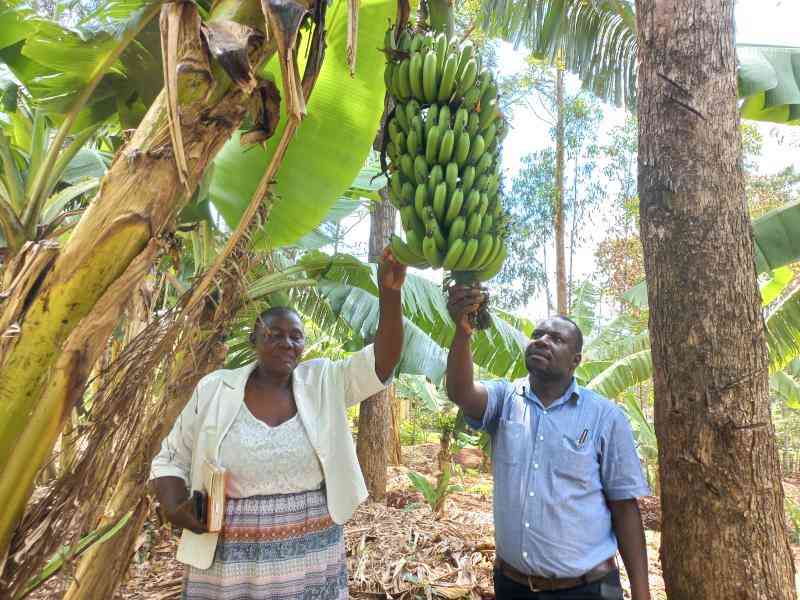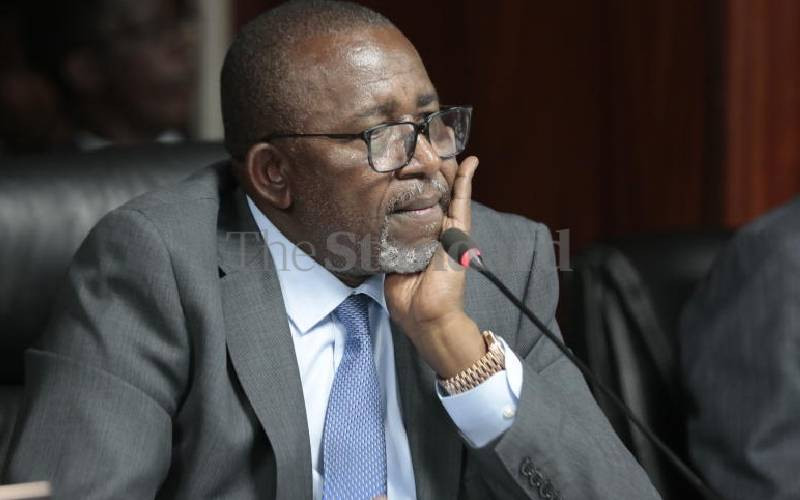Any society is as dignified as its ability to feed itself. By the same token, no society can aspire to lasting honour with begging bowls in hand.
It is against this backdrop that the quest for Kenya to feed her people through the Galana-Kulalu model is a noble venture that deserves support by all stakeholders.
Let me draw from glowing precedence across yonder. The entire population of Israel is fed on one million acres of irrigated land.
That same acreage contributes $2.08 billion per annum in exports. Absolutely nothing stops us from entertaining, conceptualising and, indeed, implementing thoughts of a project of similar prospects.
Once fully developed, the Galana project will contribute phenomenally to the local and national economies, provide direct and indirect employment opportunities to Kenyans in their tens of thousands and, no doubt, trigger a multiplier effect that will surely reverberate across sectors such as commerce, industry and many more in the service sector.
More importantly, the project’s dividends will directly enhance the country’s food security and also provide raw material to agro-industries in the entire region.
In the fullness of time, the Galana-Kulalu project will make Kenya a net exporter of food and livestock products. The conceptualisation and planning of the Galana-Kulalu project was not only painstakingly followed through but also embedded in official policy whose overarching objective is aligned to goal number two of the Sustainable Development Goals that calls for an end to hunger, achievement of food security and improved nutrition and promotion of sustainable agriculture.
Galana-Kulalu was strategically identified as a key project that would help the country attain food security. Closer home, Galana-Kulalu is a Jubilee government flagship project whose philosophy is embedded in both the Vision 2030 blueprint document and in the subsequent Agricultural Sector Development Strategy that aimed at making the agricultural sector a key driver in the attainment of the 10 per cent annual growth rate.
Contrary to popular perception, the government has not bitten more than it can chew. Through a consultative process with key stakeholders, we have agreed to achieve the completion of the project through a phased development with the first stage aiming to develop some 10,000 acres of the Galana-Kulalu project.
To move with exactitude, the government conducted trials on 500 acres that are part of the 10,000-acre model farm. When we harvested the maize, dyed-in-the-wool pessimists went to town with misinformation meant to ‘expose’ a white elephant!
But die-hard critics closed their eyes to simple facts. Planted on the 500-acre farm were 13 varieties of maize seed on trial basis.
Any honest scientist will confess that whenever one engages in an experiment, he or she is bound to attain results that do not necessarily support his or her hypotheses.
Likewise, we realized wide-ranging performance of the varieties with the best performing variety attaining a productivity of 39 bags per acre, each weighing 90 kilogrammes.
The average production was 17 bags per acre, more or less, Kenya’s national average maize production per acre.
Recently, my ministry met the Parliamentary Committee on Agriculture to update members on the progress that the ministry, through the National Irrigation Board, has made in Galana.
Stay informed. Subscribe to our newsletter
The committee expressed confidence in the project after establishing that the overall execution and implementation of the project stands at 40 per cent with completion set for September this year.
There are all indications that the project will enable us cut, by a significant margin, the Sh50 billion that we use each year to import food.
As far as maize is concerned, Kenya has an annual deficit of 10 million bags that we end up sourcing from other countries, especially Uganda and Tanzania. We expect to comfortably cover the shortfall once we open up the rest of the project to the private sector in Phase II of the project.
This should enable us significantly reduce the price of unga to below Sh85 per two-kilogram packet; enabling the government stabilize the cost of foodstuff for its citizenry.
The envisaged price drop will be facilitated through employing the latest cost-reduction technology in growing and processing maize and other crops.
Already, we have demonstrated that the cost of production under irrigation is cheaper by 40 per cent compared to the conventional way of growing maize.
I am positive that once large-scale production starts at Galana-Kulalu, it will push down the cost of food to unprecedented levels.
For once, it will be possible to guarantee that the majority of Kenyans have sufficient, safe and nutritious food that meets not just their dietary needs but also their preferences for an active and healthy life.
This is what the Galana-Kulalu project aims at achieving.
 The Standard Group Plc is a
multi-media organization with investments in media platforms spanning newspaper
print operations, television, radio broadcasting, digital and online services. The
Standard Group is recognized as a leading multi-media house in Kenya with a key
influence in matters of national and international interest.
The Standard Group Plc is a
multi-media organization with investments in media platforms spanning newspaper
print operations, television, radio broadcasting, digital and online services. The
Standard Group is recognized as a leading multi-media house in Kenya with a key
influence in matters of national and international interest.
 The Standard Group Plc is a
multi-media organization with investments in media platforms spanning newspaper
print operations, television, radio broadcasting, digital and online services. The
Standard Group is recognized as a leading multi-media house in Kenya with a key
influence in matters of national and international interest.
The Standard Group Plc is a
multi-media organization with investments in media platforms spanning newspaper
print operations, television, radio broadcasting, digital and online services. The
Standard Group is recognized as a leading multi-media house in Kenya with a key
influence in matters of national and international interest.








